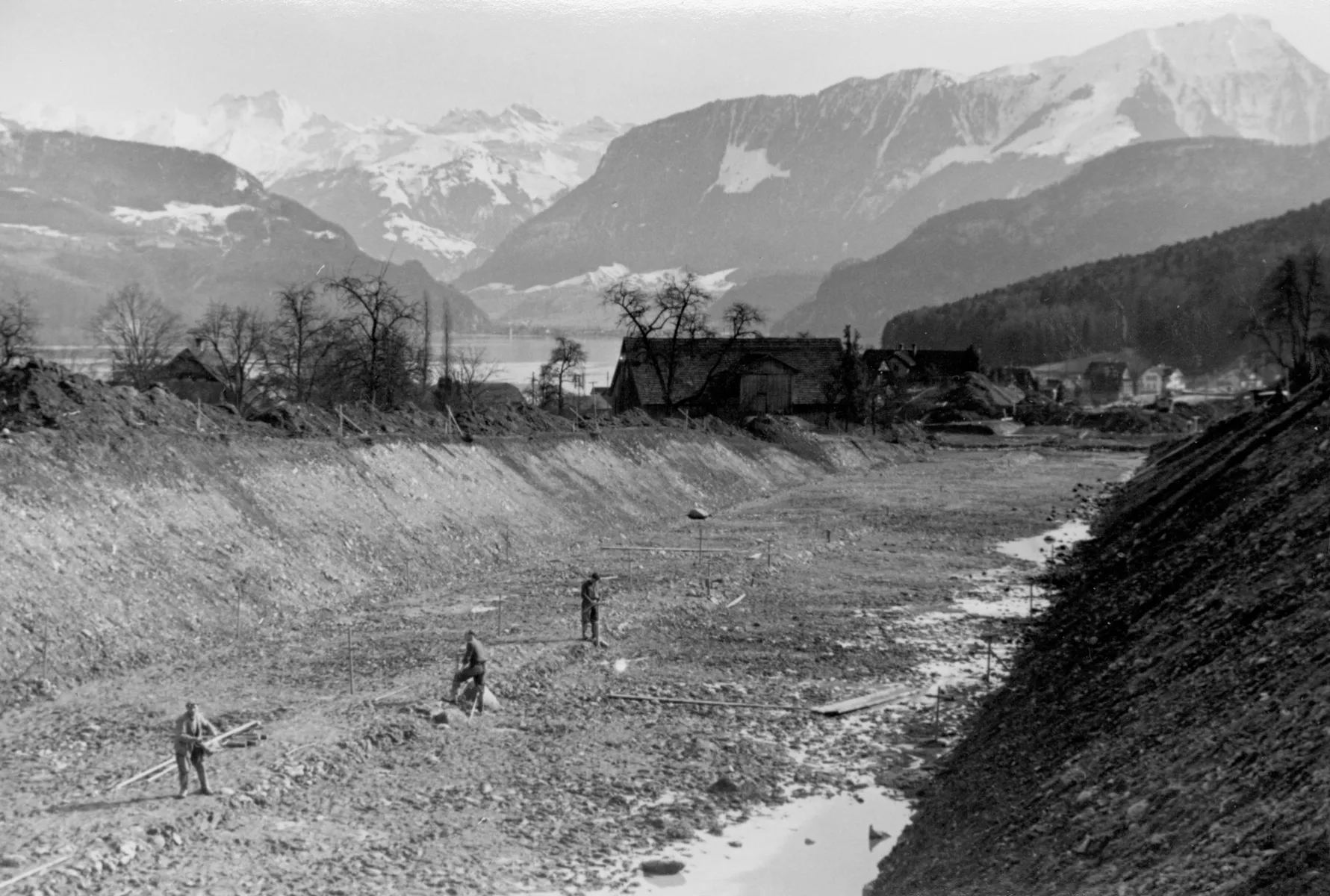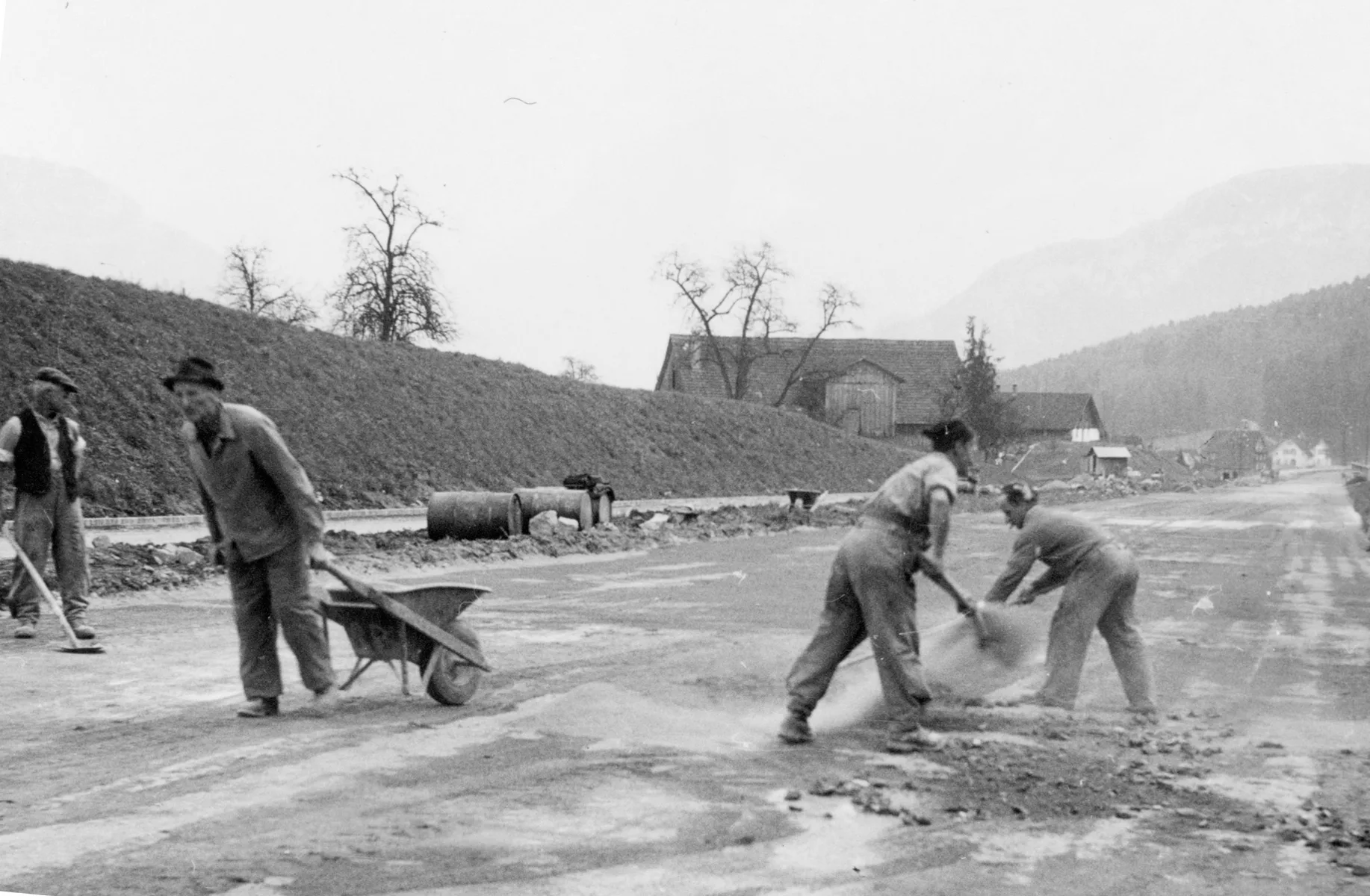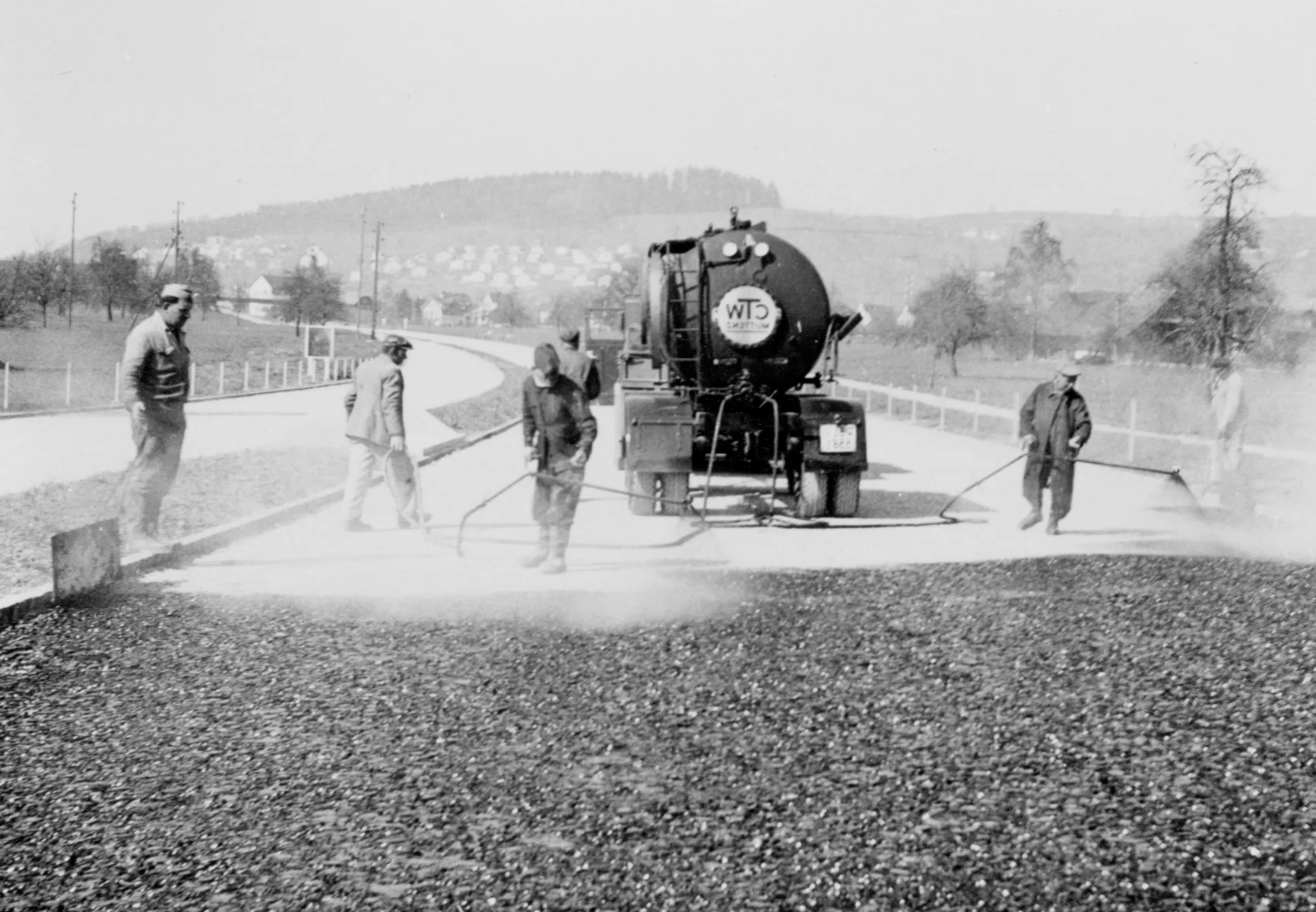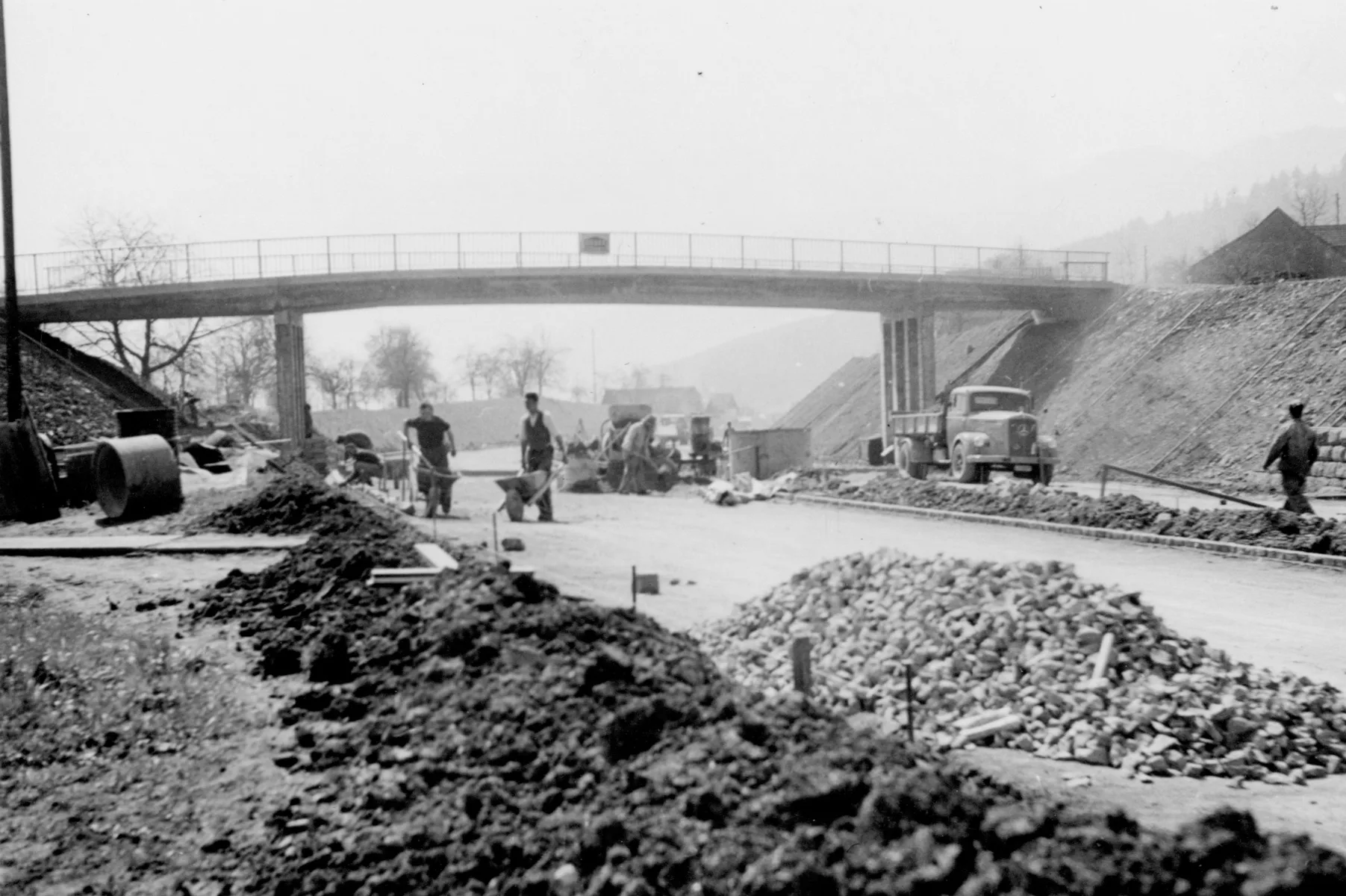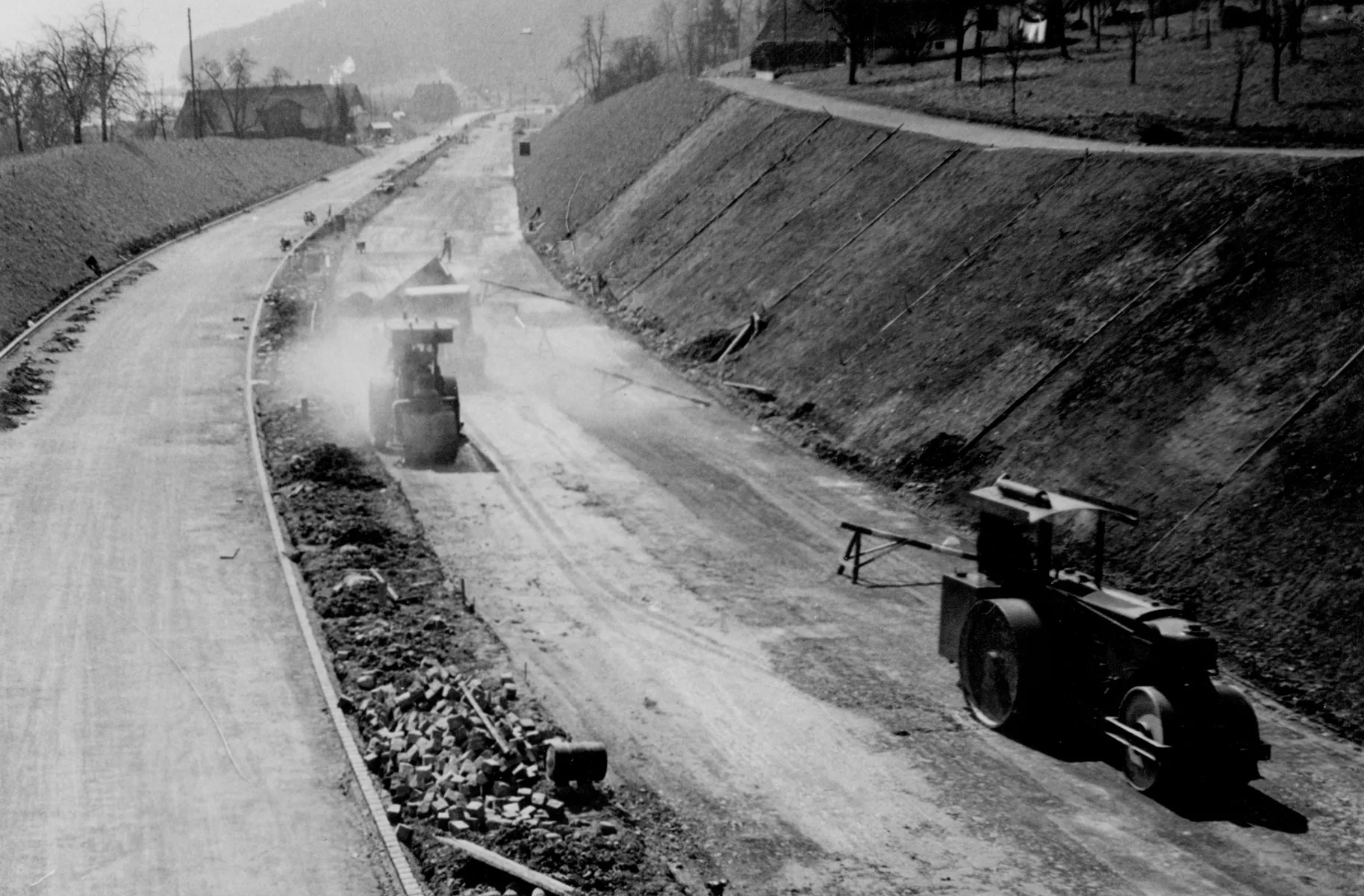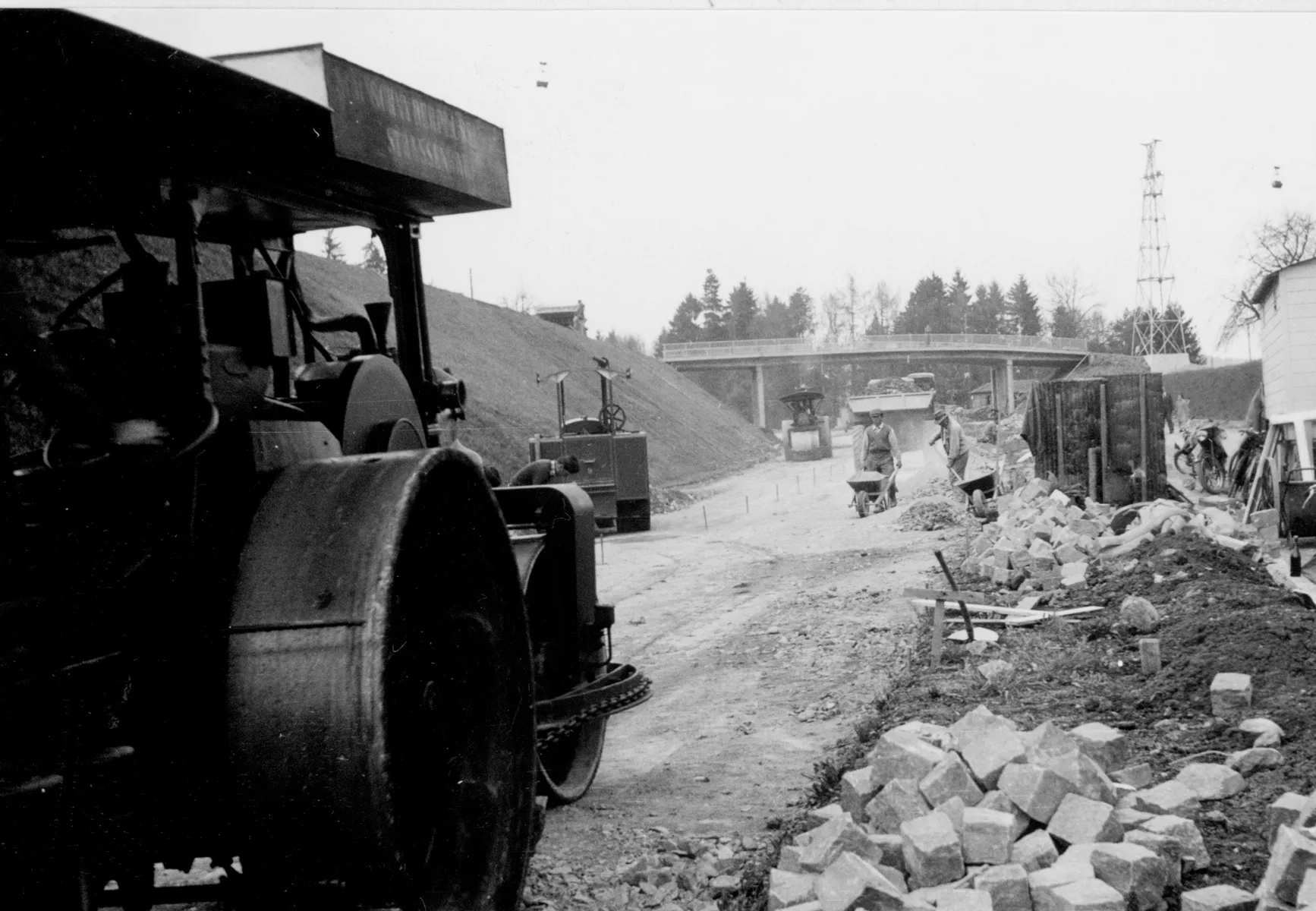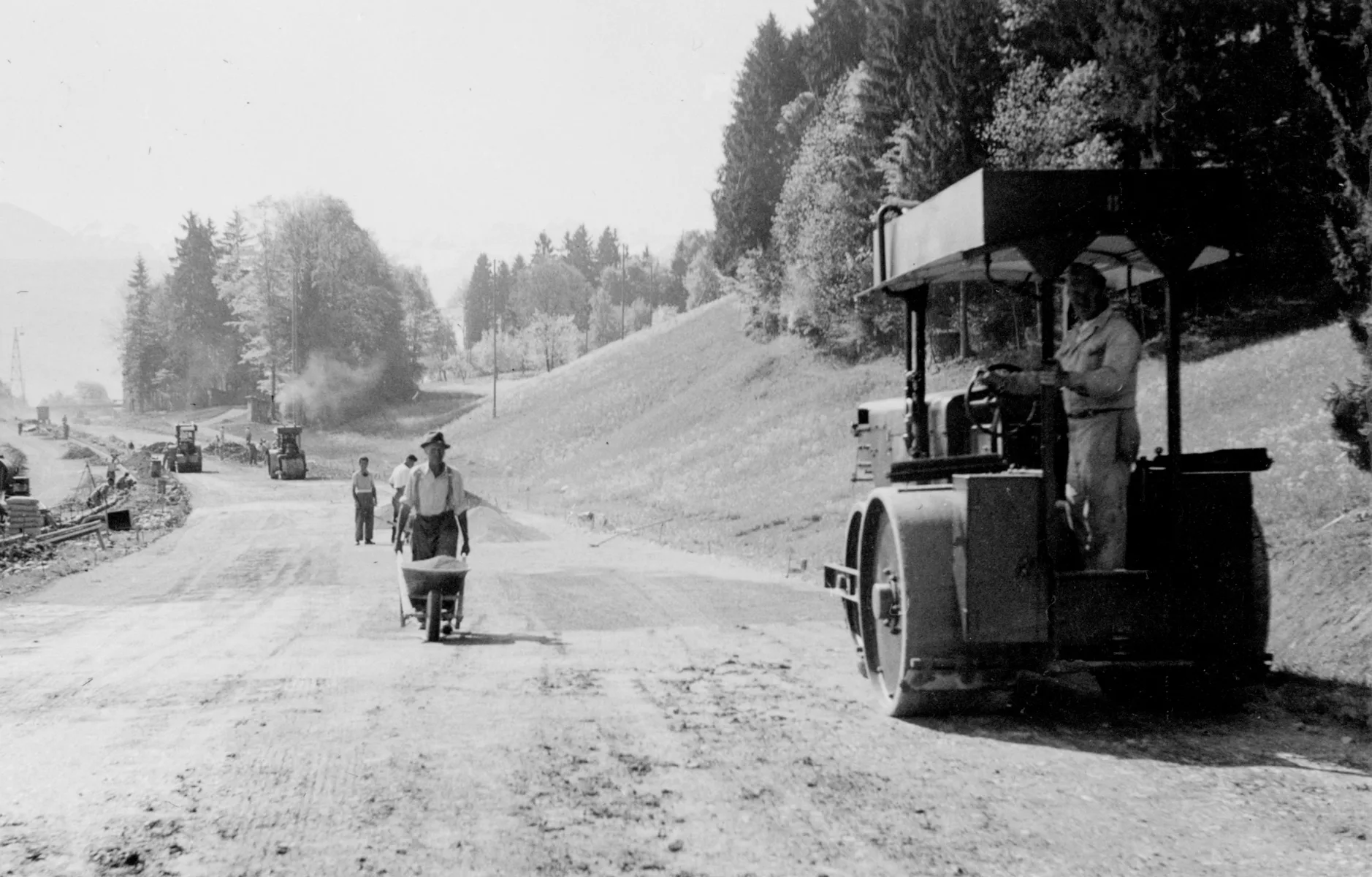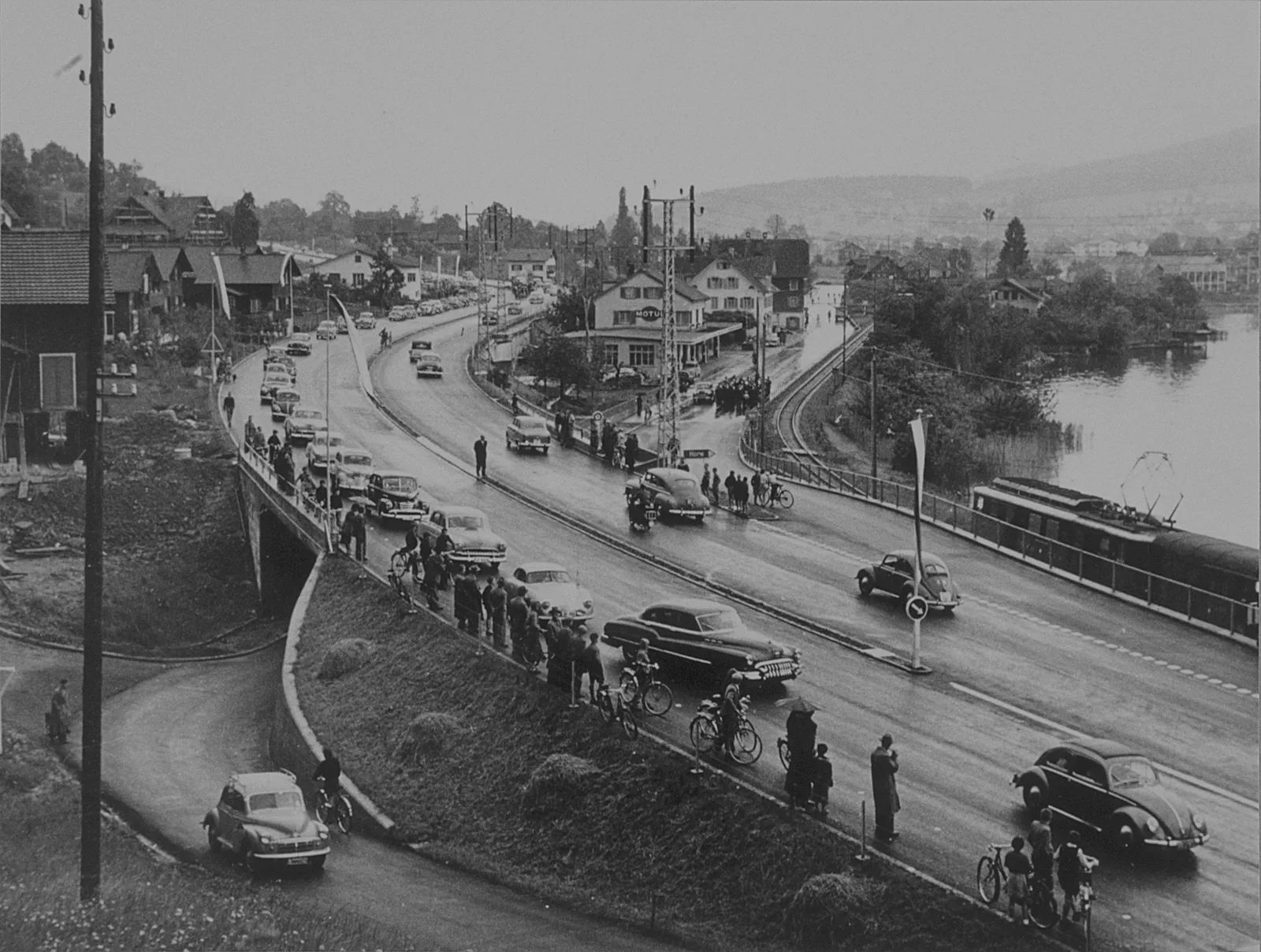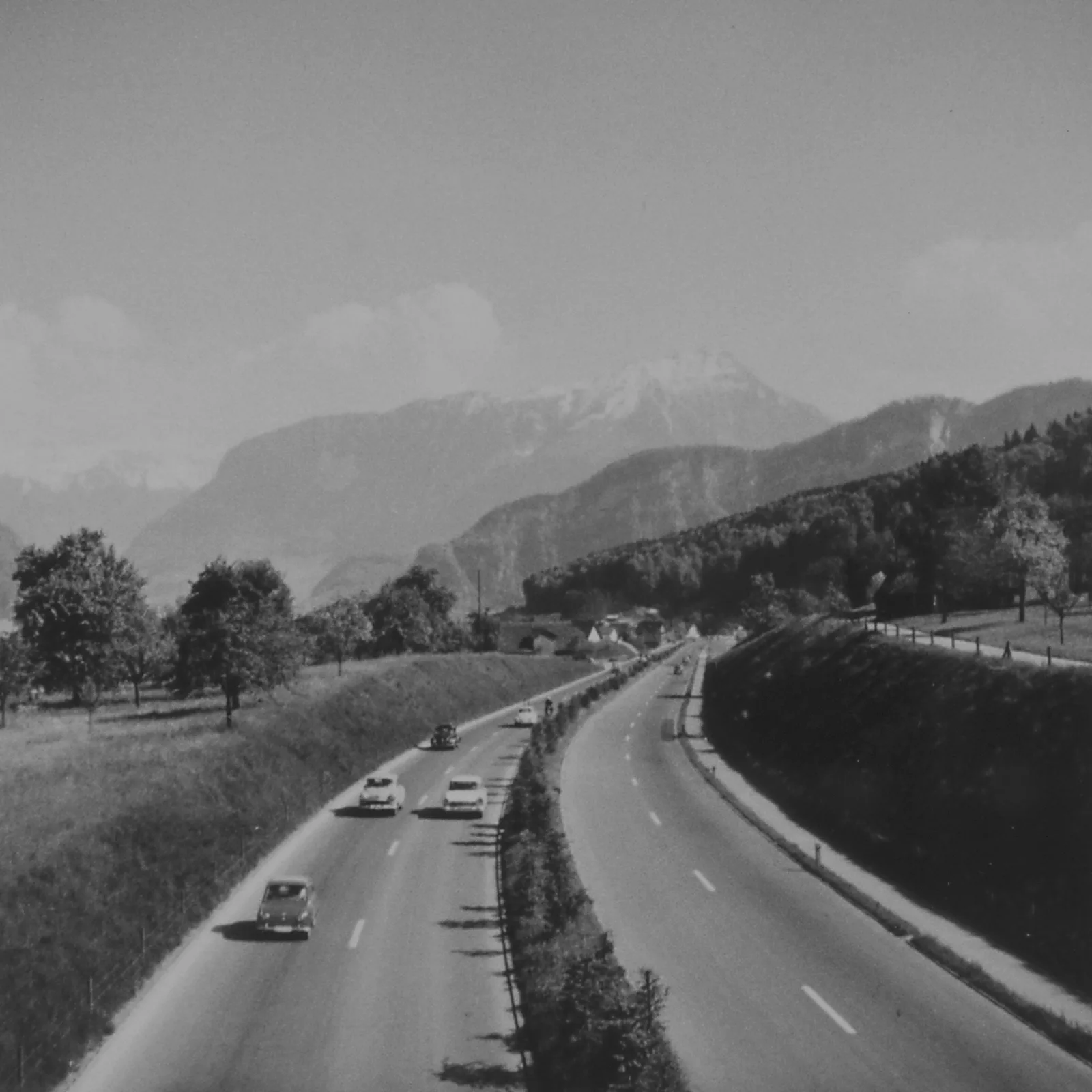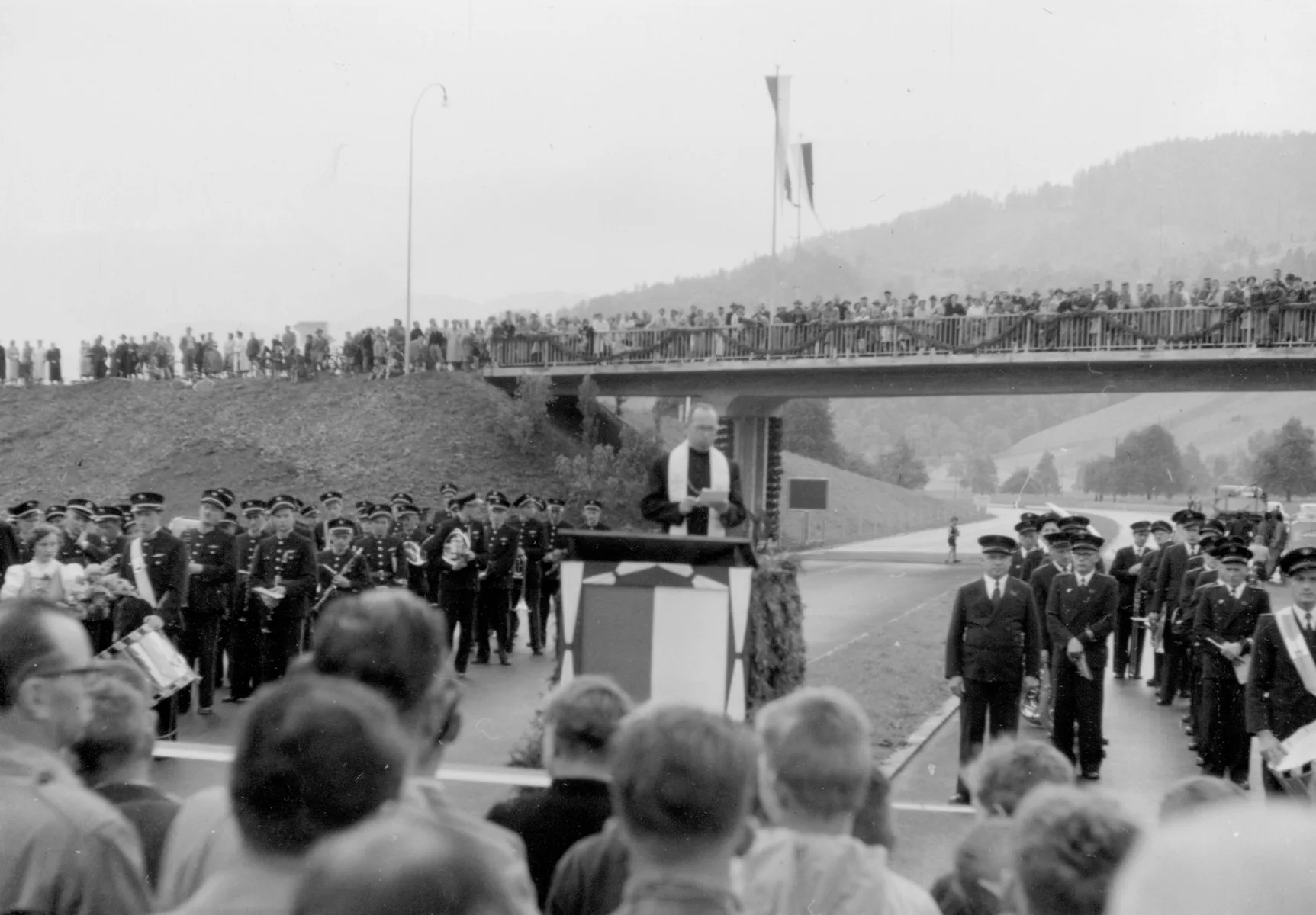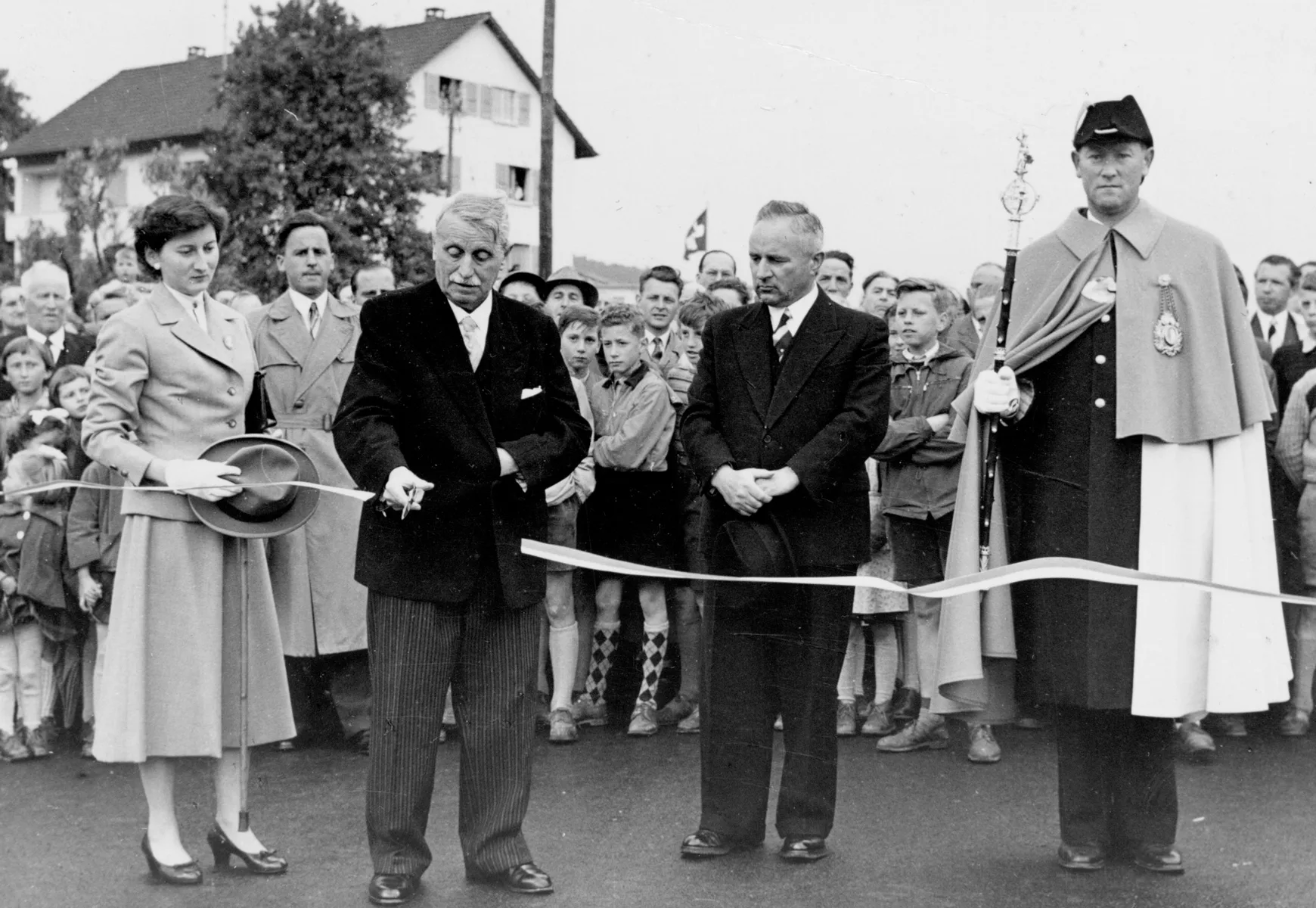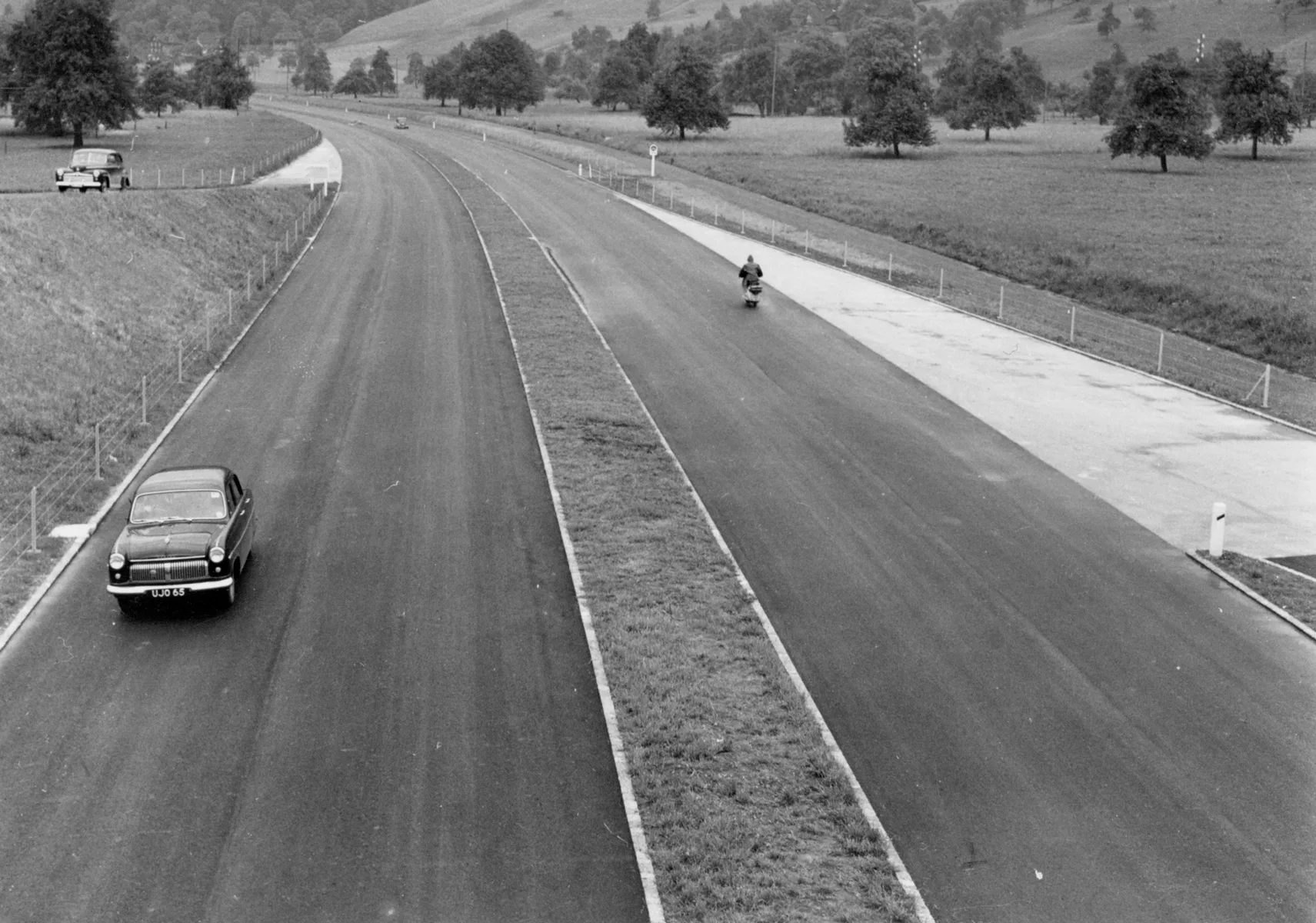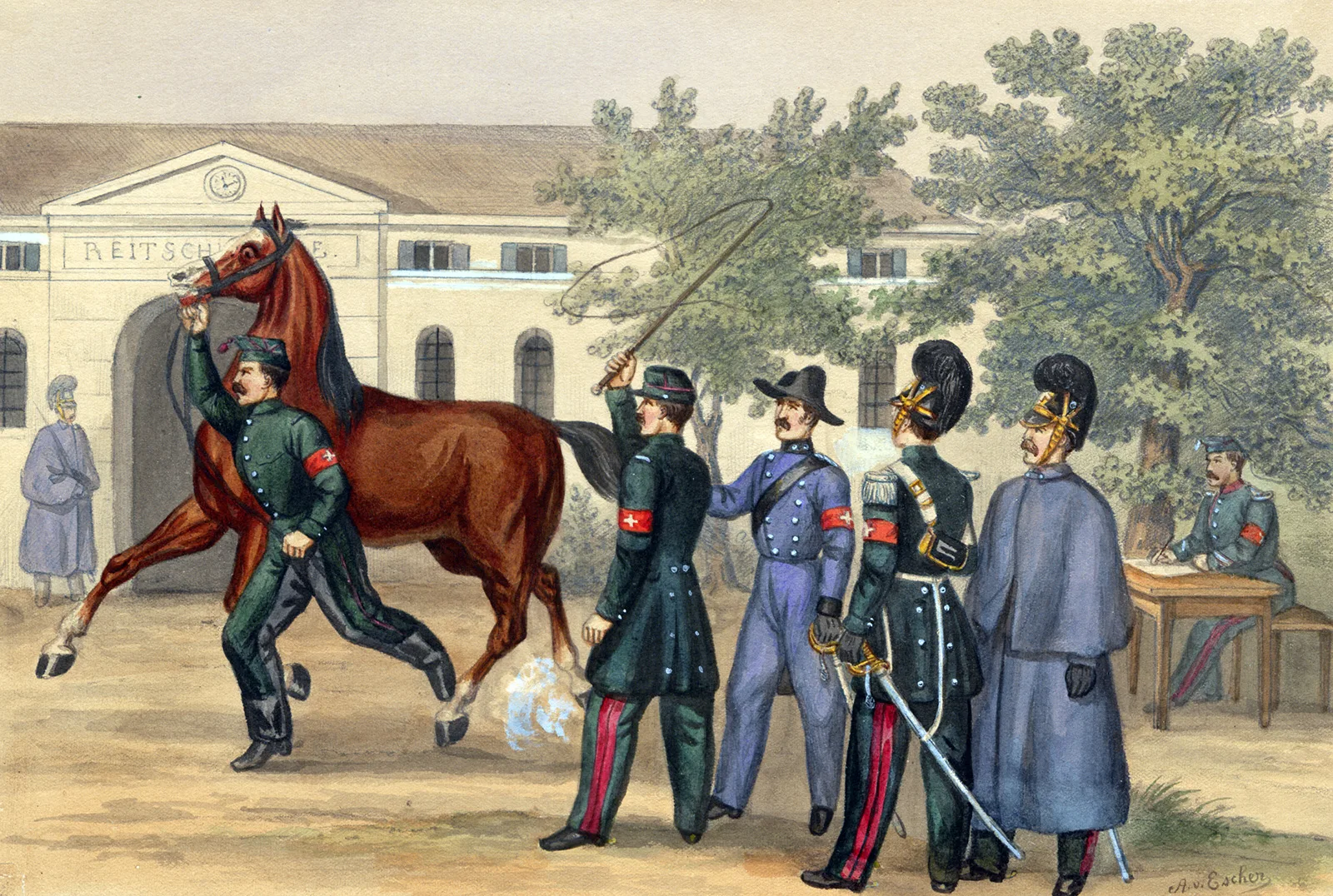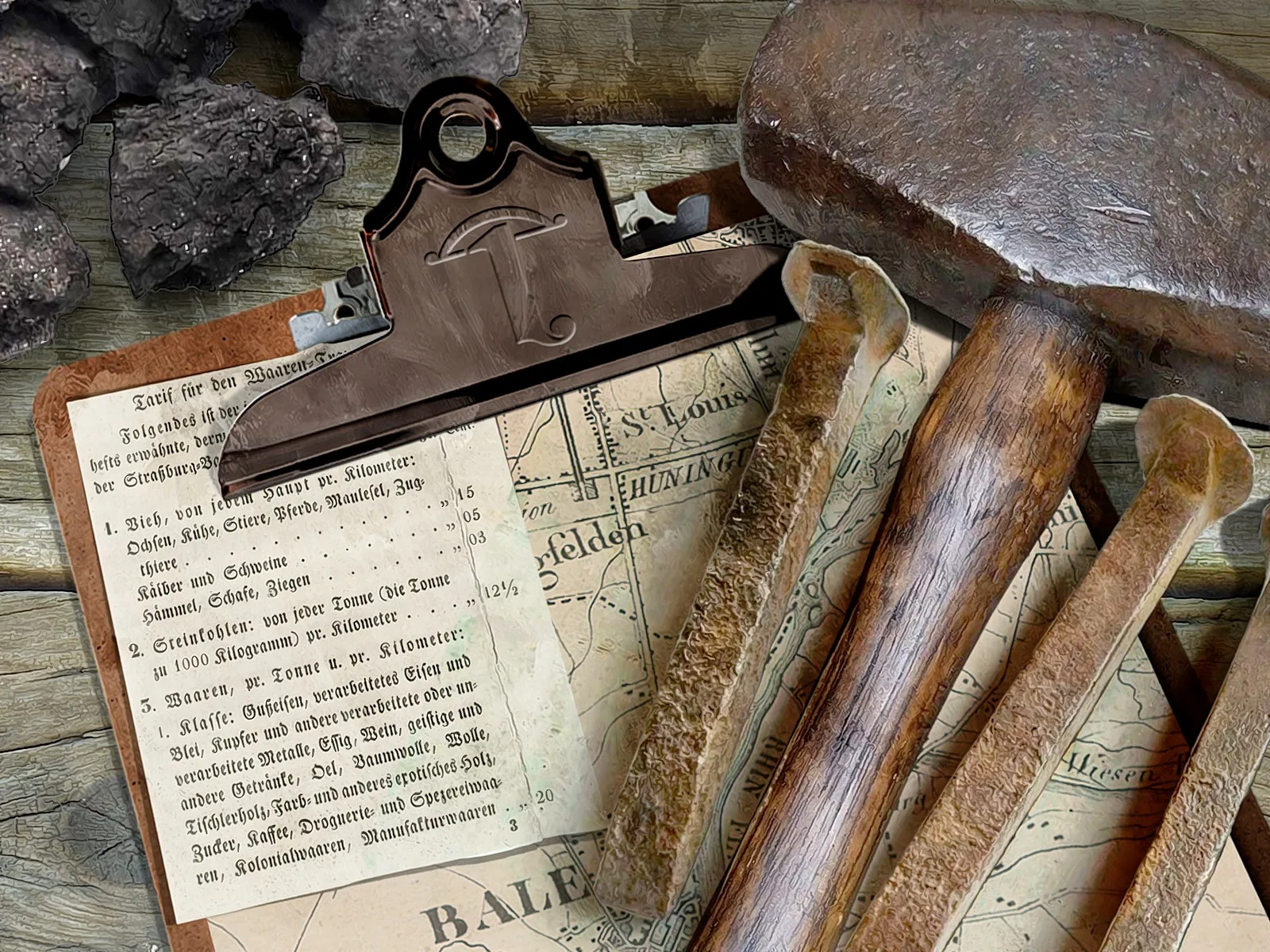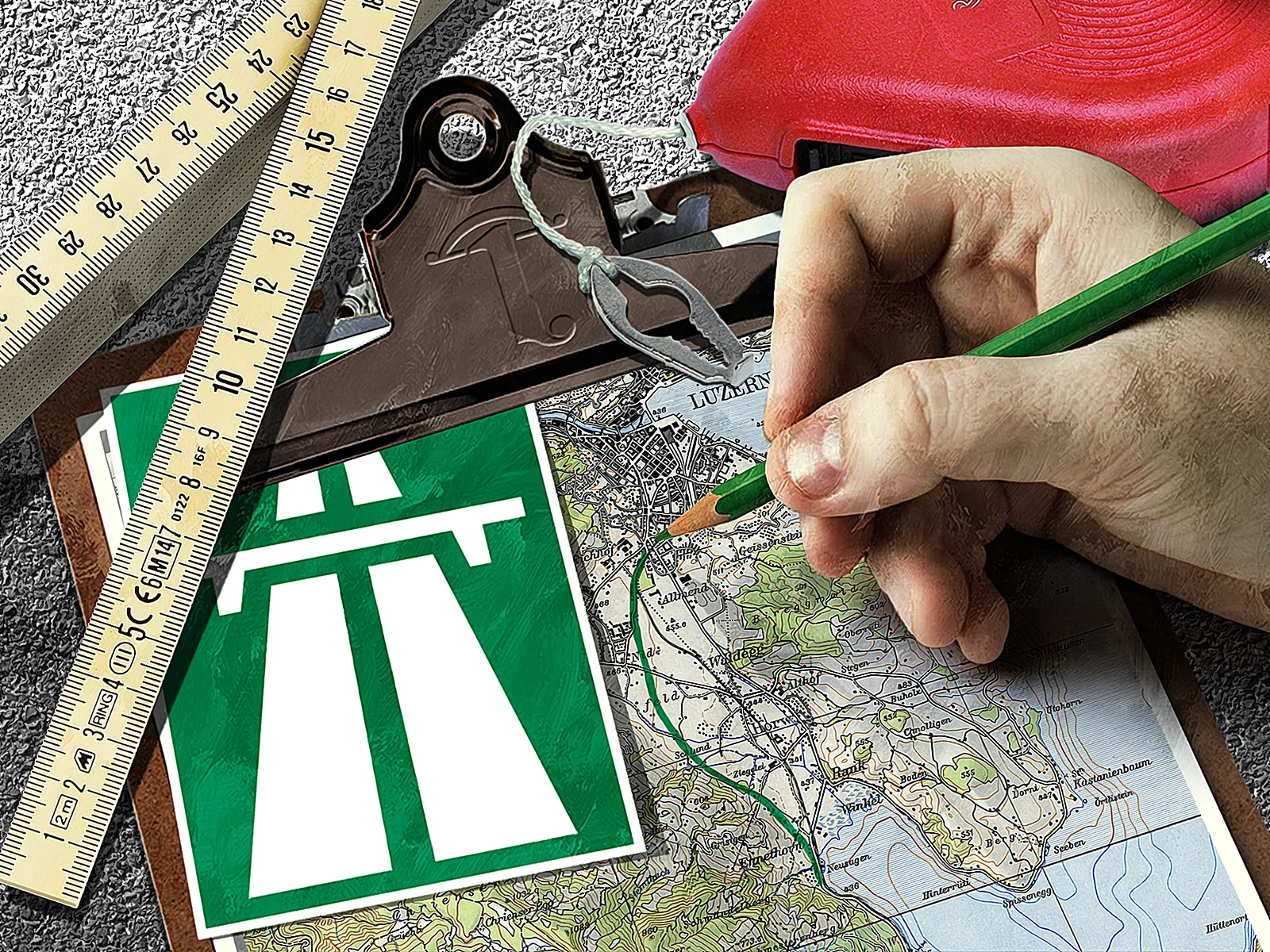
Switzerland’s first motorway
In summer 1955, Switzerland’s first motorway was opened in Lucerne. It was the first piece of the puzzle of what is now the national road network, today covering around 2,254 kilometres.
This epoch-making achievement marks a turning point in Swiss road building and, like the opening, in its day, of the first Zurich-Baden railway line, the inauguration can […] be called an event of historic significance.
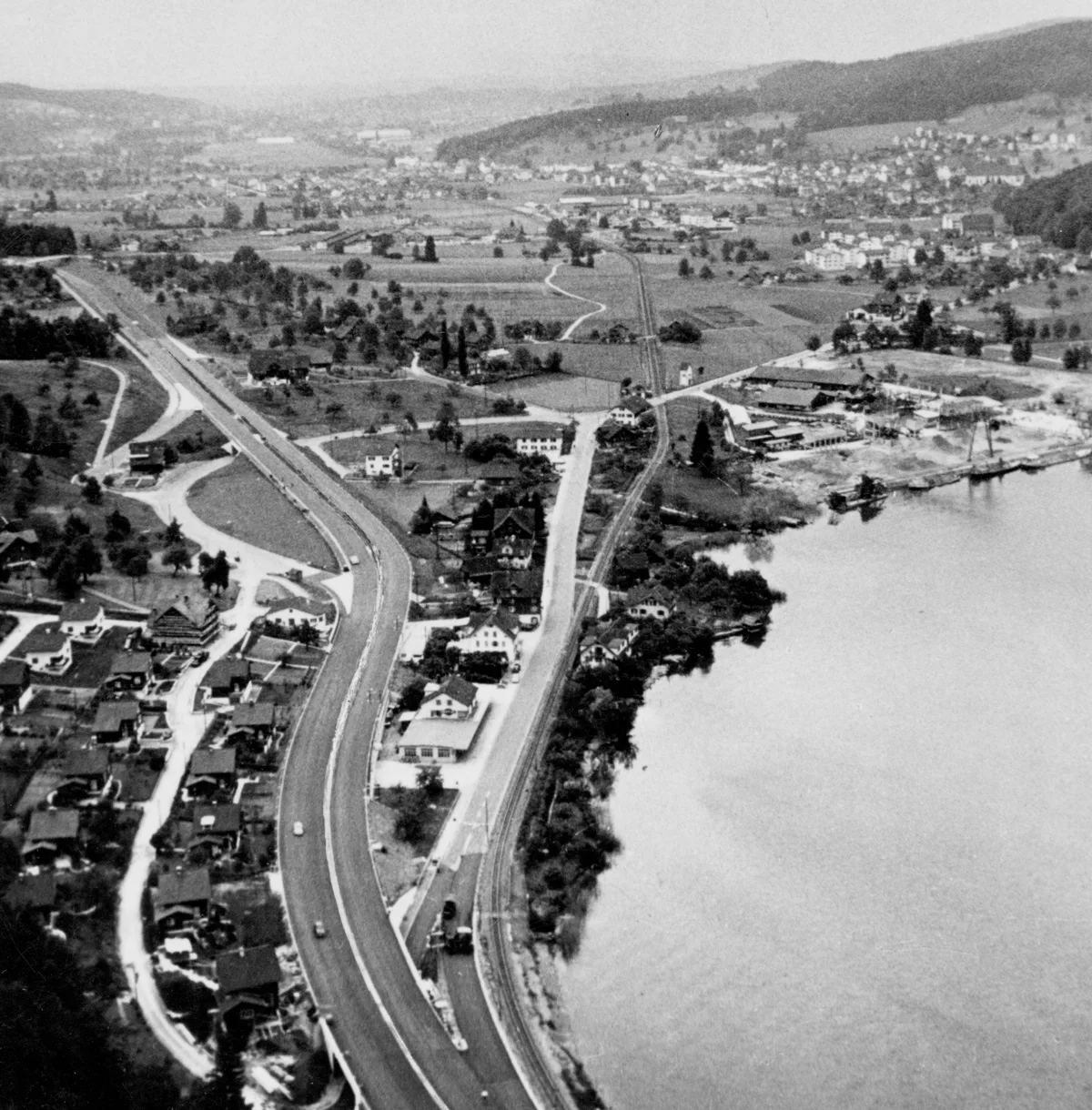
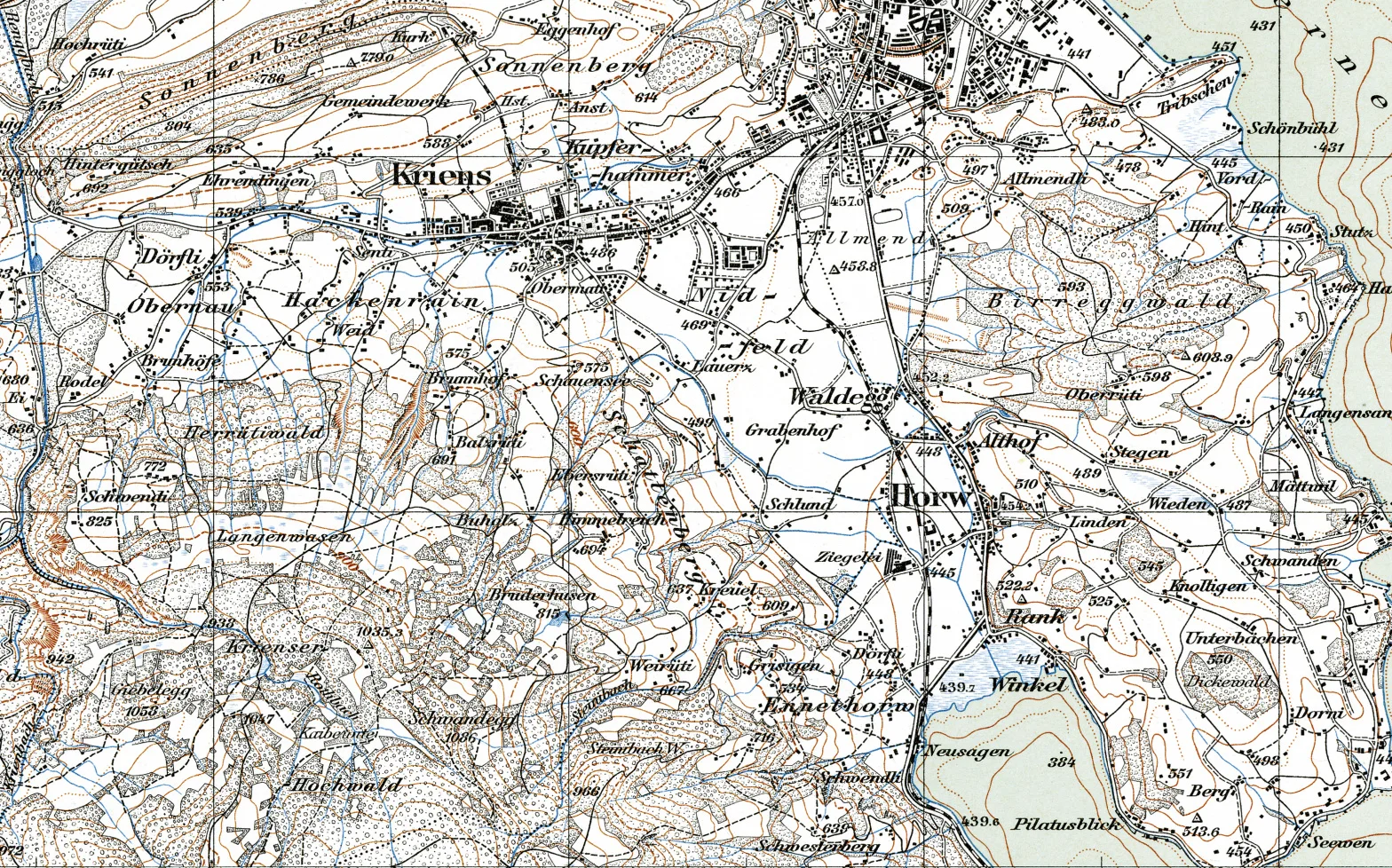
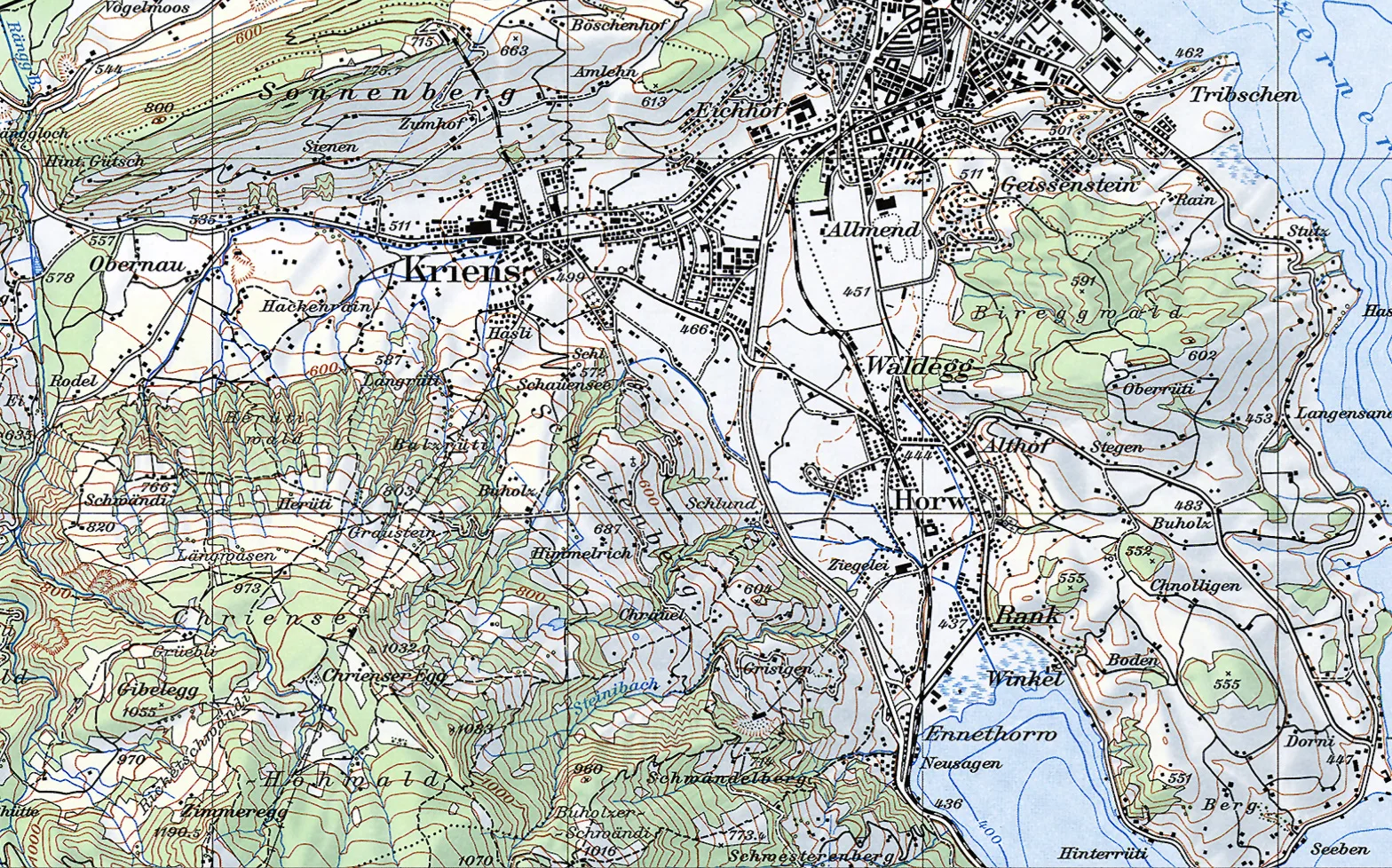
First section of the national road network
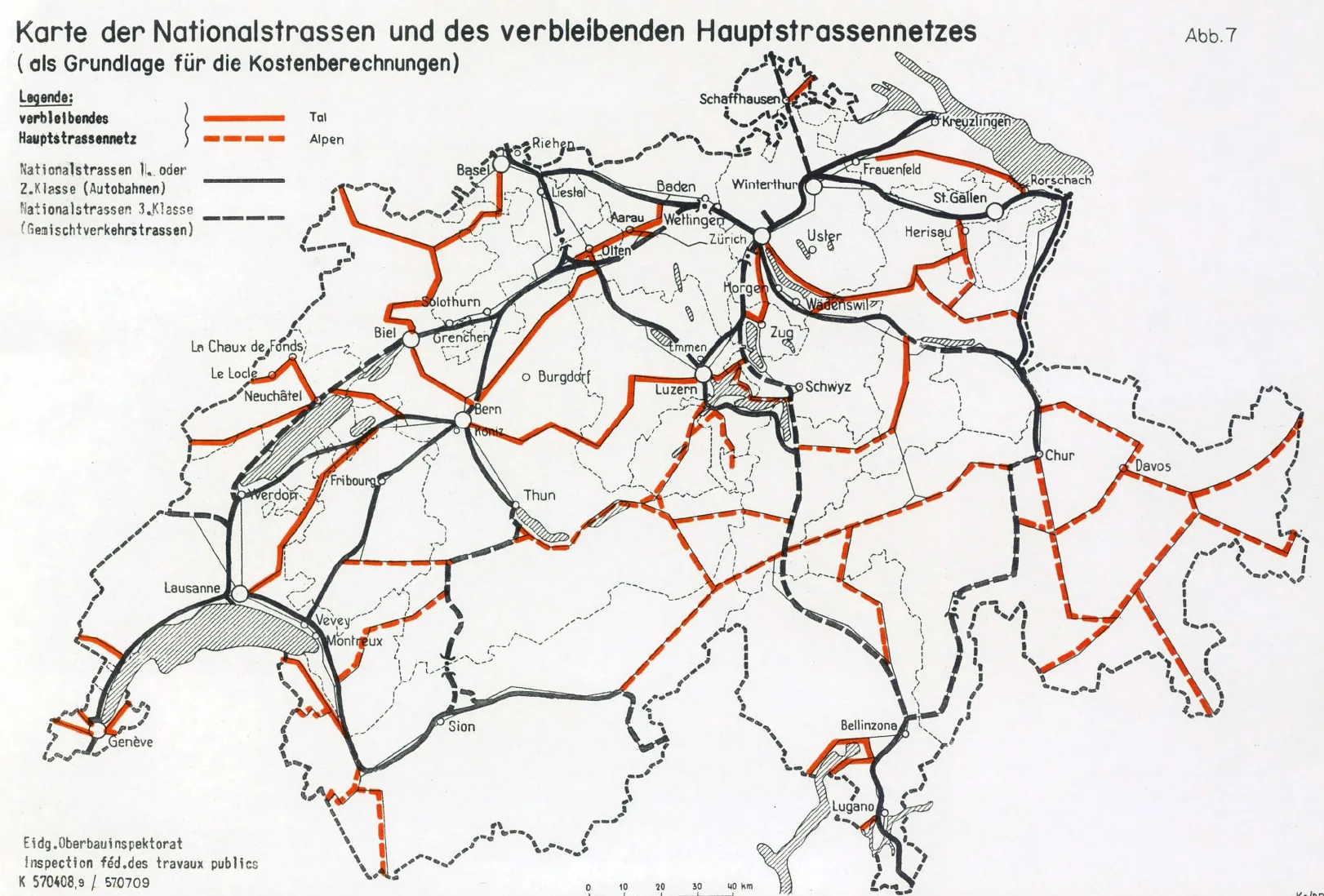
Official opening of the Lausanne-Geneva motorway on 1 May 1964. Swiss Federal Archives
At full speed, at all times
Speed limits in Switzerland explained. YouTube / America meets Switzerland
The first time…
There’s always a first time. In this series, we will be looking at historic Swiss firsts. The topics covered are very diverse: from the first zebra crossing to the first ever popular initiative. The articles have been produced in cooperation with the Schweizerisches Bundesarchiv (Swiss Federal Archives).


